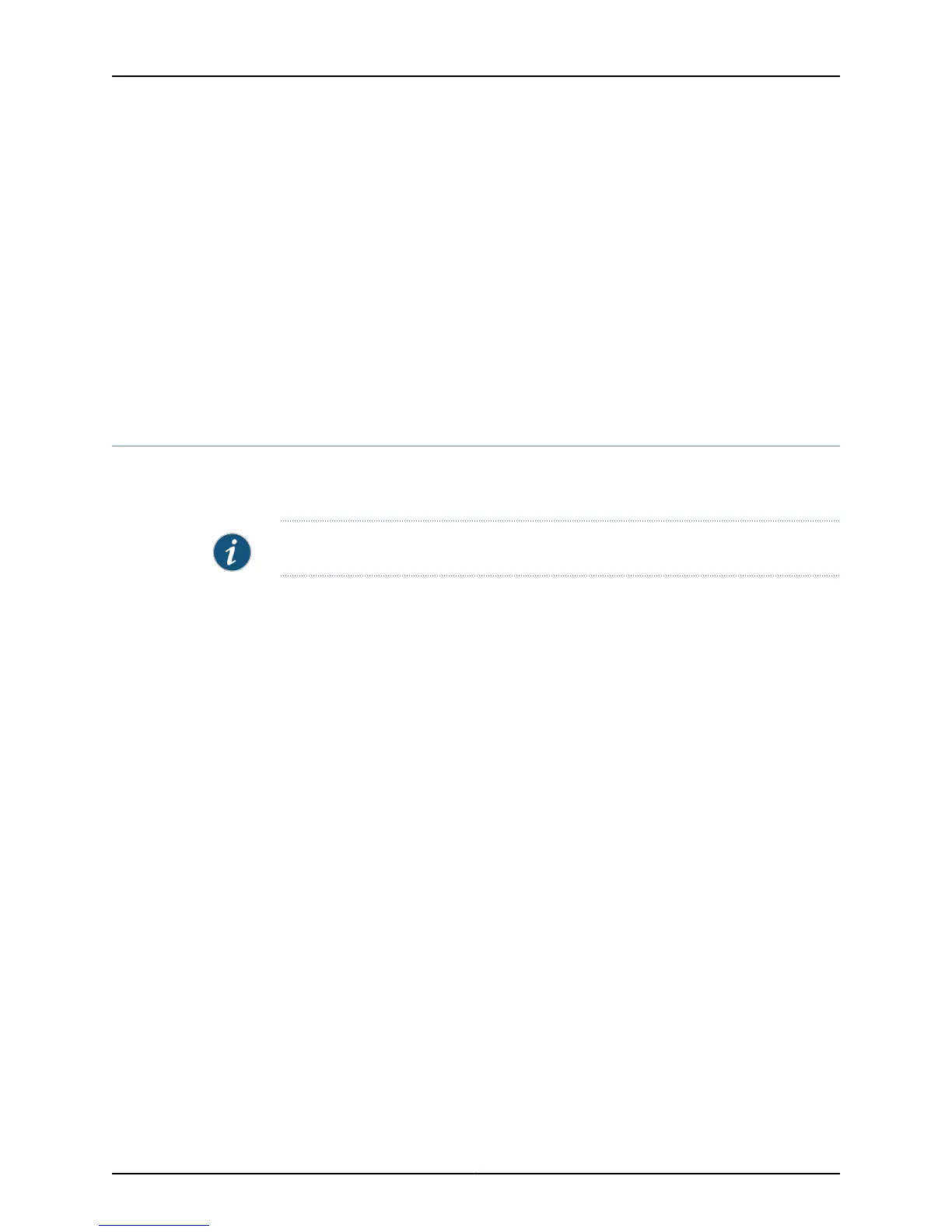ip dvmrp
• Use to activate DVMRP on an interface.
• This command automatically creates and enables DVMRP processing on the current
VR.
• Issuing this command identifies this interface as one that DVMRP owns.
• Example
host1:boston(config-if)#ip dvmrp
• Use the no version to remove DVMRP from an interface.
• See ip dvmrp.
Configuring DVMRP Limits
You can configure DVMRP and IGMP on the same interface. If you configure DVMRP and
IGMP on an interface, the router determines that DVMRP owns the interface.
NOTE: You cannot configure DVMRP and PIM on the same interface.
When you have enabled DVMRP processing on a VR, you can configure the following
settings for that VR:
•
The number of routes that the VR advertises on each interface.
•
A maximum number of DVMRP routes at which the router generates a system log
warning message and an SNMP trap.
ip dvmrp route-hog-notification
• Use to set the number of DVRMP routes that the router can record before it generates
a system log warning message.
• The warning alerts you so you can identify routers that are injecting large numbers of
routes into the MBone.
• Example
host1:boston(config)#ip dvmrp route-hog-notification 5000
• Use the no version to restore the default value, 10,000 routes.
• See ip dvmrp route-hog-notification.
ip dvmrp route-limit
• Use to limit the number of routes that the router can advertise on each interface.
• Example
host1:boston(config)#ip dvmrp route-limit 5000
125Copyright © 2010, Juniper Networks, Inc.
Chapter 4: Configuring DVMRP

